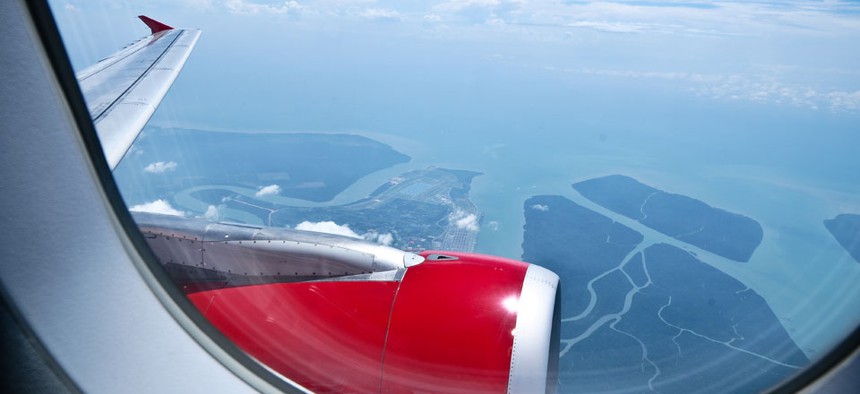FAA (Finally) Eases Restrictions on Gadgets
Policy change can go into effect as soon as airlines are ready.
Responding to a federal advisory committee report issued last month, the Federal Aviation Administration announced Thursday that it "can safely expand passenger use of Portable Electronic Devices (PEDs) during all phases of flight." FAA Administrator Michael Huerta said the agency is already working with airlines to implement the long-standing policy that has drawn ire from fliers for decades.
When the overdue changes take place will depend on the airline, but Delta is already out with a press releasesaying that it'll try to allow passengers to use their gadgets as soon as tomorrow.
The FAA policy was based more on caution than hard facts. According to The New York Times, the regulations were put into place during the 1950s when FM transmitters actually could interfere with communications. But current aircraft have more-advanced systems. In 2006, a study found no evidence in either direction that consumer electronics could cause a disruption. "There was no evidence saying these devices can't interfere with a plane, and there was no evidence saying that they can," a FAA spokesman told The Times in 2011. The Times' tech columnist Nick Bilton has made a bit of a crusade of the matter, even commissioning an independent test of the electrical emissions of a Kindle. They were found to be "minuscule."
This is obviously great news for Alec Baldwin and other electronic-obsessives. But airplanes aren't just going to be a free-for-all now that you can read your Kindle during takeoff. The FAA still prohibits a huge list of items from entering the plane. Some are plenty obvious, like firearms, hand grenades and meat cleavers. Some are already obviously annoying for fliers, such as liquid restrictions. Others are just a bit odd. You can't bring pool cues, cricket bats, cattle prods, kubatons (which are real things), vehicle airbags (???), and certain snow globes (because of the liquid) on board.
Also, to the people now lamenting that this will bring the end to the tech-sabbath refuge of the fuselage—be assured not much will really change. People were always allowed to use electronics after takeoff, and cell phones still cannot be used to make calls in the air. Also, no citizen of the civilized world should ever use electronic devices without headphones on public transportation. The only difference now is that you can continue using your laptop or iPad during takeoff. So please, attempt to work through the sometimes startling changes in G-forces as the plane accelerates down the runway.
Although, we can all agree that a particularly nefarious snow globe poses more of a public-safety threat than an e-reader ever did.



